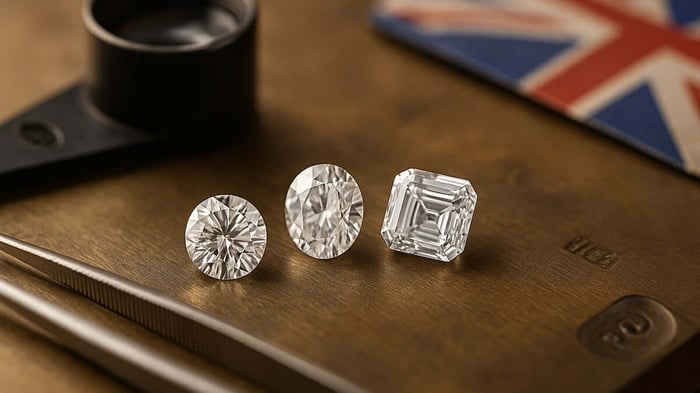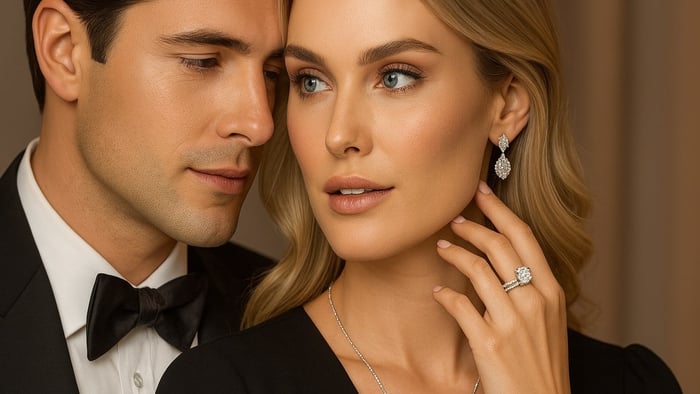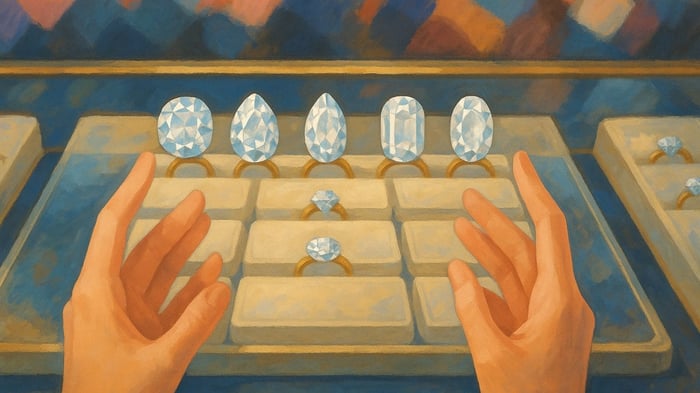In This Article
- The Science (and Art) of Growing Diamonds: Crystal Patterns & Quirks
- It’s Not All Shiny: The Oddities of CVD and HPHT Diamonds
- Lab Grown Diamond Testing: When Machines Get It Wrong
- Why Expert Eyes Matter More Than Ever (Especially When AI Gets Involved)
- The Diamond for You—Embracing Imperfection & Unexpected Brilliance
- Discover Lab-Grown Brilliance
I’ll never forget the first time I peered through a jeweller’s loupe, baffled by the mix of science and sparkle behind lab-grown diamonds. Just when I thought I had the whole story, a chat with a GIA gemmologist opened the door to the fascinating world of CVD vs HPHT, two different ways to grow diamonds, each with its own quirks. What I learned changed how I look at these gems forever and might just make you see them differently too.
TL;DR: Distilled wisdom for the busy: If you're torn between CVD and HPHT diamonds, both have quirks—it's less about the process and more about curation and expert guidance. Expect a few surprises, from blue-tinged stones to high-tech grading nuances.
The Science (and Art) of Growing Diamonds: Crystal Patterns & Quirks
When it comes to diamond synthesis methods, the way a diamond grows is as fascinating as the finished gem itself. Natural diamonds, for example, are the ultimate slow-cooked masterpiece. They form over millions of years, deep beneath the Earth’s crust, enduring shifting heat and pressure. This process creates intricate, tree ring-like patterns inside the stone—each layer a record of changing conditions.
Lab-grown diamonds, on the other hand, have their own unique quirks, depending on the method used. Let’s break down the two main types: CVD diamonds and HPHT diamonds.
CVD (Chemical Vapour Deposition) Diamonds: These are grown in a chamber, layer by layer. Under a microscope, you can see the neat, stacked growth—almost like a mille-feuille pastry, but infinitely shinier. As one expert put it:
“CVD diamonds are growing in layers so we see a layered pattern of growth—oh so one layer on another layer exactly.”
This method can produce larger stones, but sometimes you’ll spot subtle colour zoning or striations, a direct result of the layer-by-layer process.
HPHT (High Pressure High Temperature) Diamonds: In contrast, HPHT diamonds grow in a tightly controlled, geometric fashion. The process mimics the Earth’s natural conditions, but in a lab, resulting in a cubic crystal structure. As described:
“HPHT Diamonds are a cubic process so it's growing in a very geometric pattern in a controlled environment.”
These diamonds often come out purer or with more vibrant traits, thanks to the precise conditions.
Both CVD and HPHT diamonds share the same carbon lattice as natural diamonds, but their internal patterns differ—and these quirks can affect optical properties. I’ll never forget my first time peering at a CVD diamond through a microscope at a GIA lab. Spotting those delicate growth lines was oddly satisfying, like discovering hidden brushstrokes in a Renaissance painting. It’s a reminder that, even in the world of lab-grown diamond comparisons, the science and art are inseparable.
Lab Diamond Emerald Halo Earrings 1.00ct D/VVS in 925 Silver
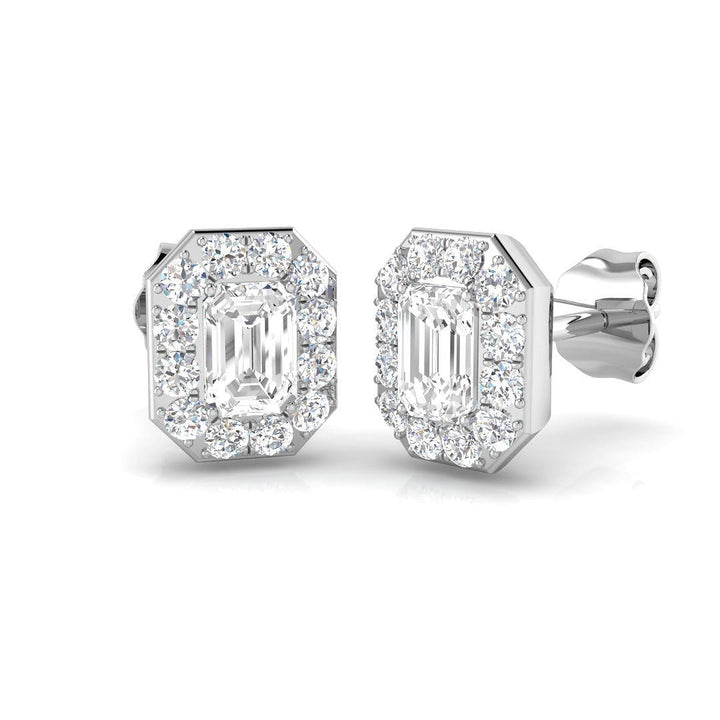
£514.00
£995.00
These exquisite Lab Diamond Emerald Halo Earrings feature a total diamond weight of 1.00ct, ensuring elegance and brilliance. The centrepiece of each earring is a lustrous emerald-cut lab diamond, meticulously crafted to showcase its D/VVS quality. Surrounding these stunning central… read more
It’s Not All Shiny: The Oddities of CVD and HPHT Diamonds
CVD Diamonds: The Tinting Trap
With CVD diamonds, you need to watch for subtle brown or grey tinges—especially if the diamond hasn’t been grown under ideal conditions. I nearly bought a “perfect” CVD stone, only to notice under natural light it looked oddly dull. Later, a gemmologist explained:
“With CVD you see some browning gray issues.”
These tints can be hard to spot unless you know what to look for, and sometimes only show up under magnification or certain lighting. This is why professional colour grading by a reputable lab—such as GIA or IGI—is so important.
HPHT Diamonds: The Blue Surprise
HPHT diamonds have their own oddity: a blue tinge, caused by excess boron during growth. Sometimes this blue is subtle and attractive, but other times it’s quite obvious—especially in higher colour grades.
“Tinges with HPHT excess of boron will turn the stone blue.”
If you’re after a classic white sparkle, this can be a dealbreaker, but some buyers actually seek out this unique hue.
Heart Lab Diamond Cluster Pendant Necklace 0.40ct in 9k Rose Gold
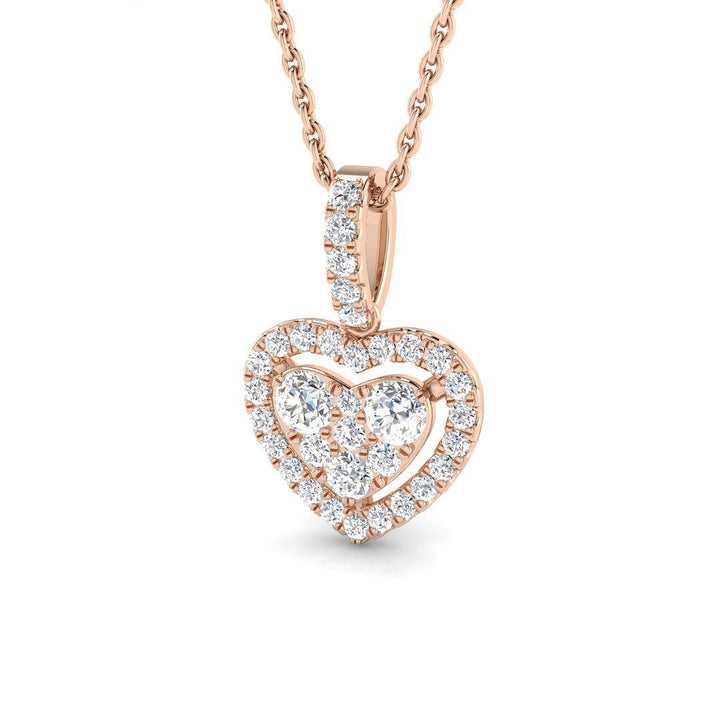
£368.00
£735.00
Indulge in the enchanting elegance of the Heart Lab Diamond Cluster Pendant Necklace, boasting a total diamond weight of 0.40ct. This exquisite piece is crafted in lustrous 9k rose gold, exuding a warm, romantic glow. At its heart lies a… read more
Lab Grown Diamond Testing: When Machines Get It Wrong
Here’s a story: I once had a jeweller test my HPHT diamond ring, and the machine declared it “moissanite.” Cue panic! Turns out, older diamond testers can misidentify HPHT stones due to their unique electrical properties. CVD diamonds, on the other hand, usually test as 100% diamond. This is a reminder that machines aren’t always right—and why human expertise is crucial.
Ultimately, the real game is finding someone who’s seen thousands of lab-grown diamonds and can spot these subtle quirks. Certificates are invaluable, but nothing beats the trained human eye for picking a truly beautiful stone.
Why Expert Eyes Matter More Than Ever (Especially When AI Gets Involved)
Let’s be honest: not all lab-grown diamonds are created equal. Even with the rise of advanced grading technologies from respected organisations such as GIA and IGI, there’s still no substitute for expert judgement in diamond selection.
Both GIA and IGI use a combination of advanced instruments and trained graders to assess diamonds. These labs can precisely measure proportions, assign clarity grades, and grade colour to international standards. But here’s the catch: subtle nuances—like a faint brown tint in an F colour stone, or a blue undertone in an HPHT D grade—are often only spotted by someone who’s handled thousands of lab-grown diamonds in person. Of course, this means that these slight shades are invisible to almost all jewellery buyers.
“Getting somebody who's seen thousands of laboratory grown diamonds and compare them and being able to tell you ‘hey, this one’s an F colour but it has Browning’ or ‘this HPHT D has blue’—all of that stuff is really important.”
That’s why expert curation is still absolutely vital. Lab reports are essential, but they don’t capture a diamond’s “life” or “fire.” I’ve seen stones that technically pass every test, yet in person, they simply don’t sing.
When it comes to CVD vs HPHT grading, human discernment remains key. Most larger lab-grown diamonds are CVD, while smaller ones often use the HPHT process. Both can be stunning, but only if chosen with care.
Maya Lab Diamond Bezel Solitaire Engagement Ring 3.00ct G/VS 18k Yellow Gold
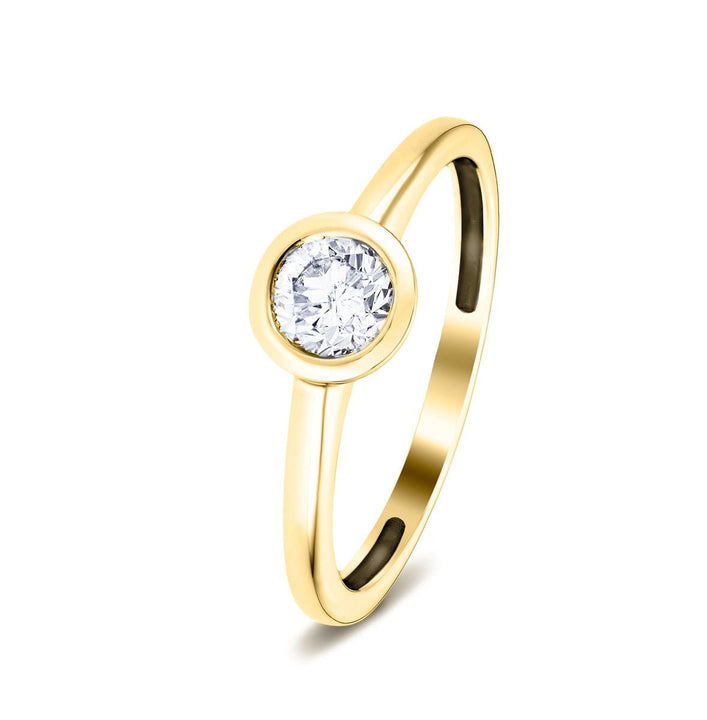
£1,945.00
£5,621.00
Celebrate your love with the elegant Maya Lab Diamond Bezel Solitaire Engagement Ring. This stunning ring features a 3.00 carat G/VS-graded lab-created diamond, bezel-set in 18k yellow gold. Certified by IGI and UK hallmarked. This ring is designed using a… read more
The Diamond for You—Embracing Imperfection & Unexpected Brilliance
After my whirlwind journey comparing CVD vs HPHT lab-grown diamonds, one thing is clear: there is no single “best” choice. Each growth process brings its own quirks and charms.
No matter how advanced the technology or how trendy lab-grown diamonds become in 2025, nothing replaces having an honest chat with someone who’s seen thousands of stones. Their experience, combined with trusted grading from GIA or IGI, gives you the best possible safeguard against surprises.
So whether you’re drawn to the scientific marvel of CVD, the classic appeal of HPHT, or simply the stone that makes your heart skip, embrace the imperfections and unexpected brilliance. Choosing a lab-grown diamond is still a deeply personal adventure, and sometimes, the unpredictability is what makes it truly yours.
Discover Lab-Grown Brilliance
At After Diamonds, every piece is designed and handcrafted here in the UK, using carefully selected lab-grown diamonds in beautiful, high-colour grades , most often D or G, for a crisp, bright sparkle. Many of our pieces are IGI-certified and clearly labelled, so you can choose with confidence. From timeless solitaires to modern trilogy and halo designs, you’ll find jewellery that’s every bit as individual as you are.
Explore now: Engagement Rings • Trilogy Rings • Eternity Bands • Necklaces


